-
 Bitcoin
Bitcoin $83,966.7716
2.55% -
 Ethereum
Ethereum $1,817.5394
1.91% -
 Tether USDt
Tether USDt $0.9994
-0.01% -
 XRP
XRP $2.1234
4.01% -
 BNB
BNB $596.5824
1.51% -
 Solana
Solana $122.9232
6.60% -
 USDC
USDC $1.0000
0.01% -
 Dogecoin
Dogecoin $0.1697
7.26% -
 Cardano
Cardano $0.6590
2.95% -
 TRON
TRON $0.2396
1.62% -
 UNUS SED LEO
UNUS SED LEO $9.5334
1.48% -
 Chainlink
Chainlink $12.9296
2.40% -
 Toncoin
Toncoin $3.3729
-5.68% -
 Stellar
Stellar $0.2583
0.47% -
 Avalanche
Avalanche $18.0805
0.95% -
 Sui
Sui $2.2737
2.80% -
 Shiba Inu
Shiba Inu $0.0...01222
0.72% -
 Hedera
Hedera $0.1651
2.88% -
 Litecoin
Litecoin $84.1844
2.53% -
 Polkadot
Polkadot $4.0329
0.57% -
 MANTRA
MANTRA $6.2618
-2.07% -
 Bitcoin Cash
Bitcoin Cash $299.0692
1.89% -
 Bitget Token
Bitget Token $4.5296
1.58% -
 Dai
Dai $0.9999
0.00% -
 Ethena USDe
Ethena USDe $0.9990
-0.05% -
 Hyperliquid
Hyperliquid $11.9987
4.67% -
 Monero
Monero $214.4963
2.32% -
 Uniswap
Uniswap $5.8942
2.56% -
 Pi
Pi $0.5243
-9.11% -
 Pepe
Pepe $0.0...07086
8.12%
What is Layer 2? How does it solve the problem of blockchain expansion?
Layer 2 solutions enhance blockchain scalability by processing transactions off-chain, reducing congestion and fees on networks like Ethereum, while maintaining security.
Apr 04, 2025 at 10:57 am
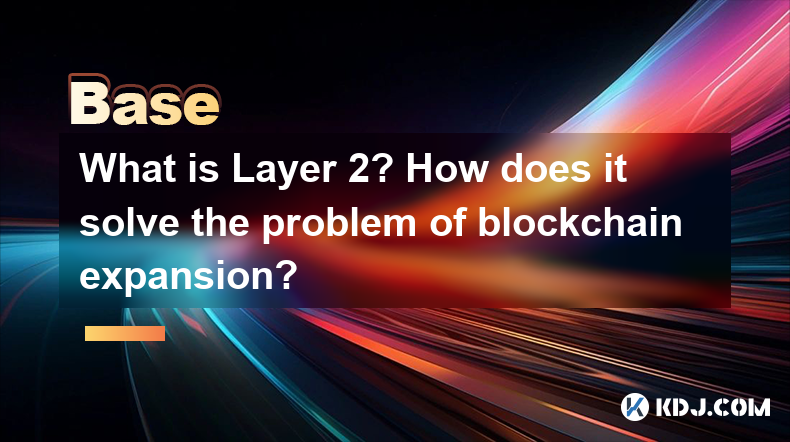
Layer 2 refers to a secondary framework or protocol built on top of an existing blockchain system, known as Layer 1. The primary purpose of Layer 2 solutions is to enhance the scalability, speed, and efficiency of transactions on the blockchain without compromising its security and decentralization. By handling transactions off the main chain, Layer 2 technologies alleviate the congestion and high fees often associated with popular blockchains like Ethereum.
The Need for Layer 2 Solutions
The blockchain industry has faced significant challenges in scaling to meet the growing demand for decentralized applications (dApps) and transactions. Layer 1 blockchains, such as Bitcoin and Ethereum, have inherent limitations in terms of transaction throughput and speed. For instance, Ethereum's network can process around 15-20 transactions per second (TPS), which is insufficient for widespread adoption in high-frequency applications. This bottleneck leads to slow transaction times and high gas fees, deterring users and developers from fully embracing blockchain technology.
How Layer 2 Enhances Scalability
Layer 2 solutions address these scalability issues by processing transactions off the main blockchain, thereby reducing the load on the network. These solutions can handle a significantly higher number of transactions per second, often in the thousands, compared to the limited capacity of Layer 1. By moving transactions off-chain, Layer 2 technologies can achieve faster transaction confirmations and lower fees, making blockchain more accessible and efficient for everyday use.
Types of Layer 2 Solutions
There are several types of Layer 2 solutions, each with its own approach to enhancing blockchain scalability. Some of the most prominent include:
- State Channels: These allow participants to conduct multiple transactions off-chain and only settle the final state on the main blockchain. An example is the Lightning Network for Bitcoin, which enables instant payments with minimal fees.
- Sidechains: These are separate blockchains that run parallel to the main chain and can interact with it. They allow for the transfer of assets between the main chain and the sidechain, enabling more scalable operations. An example is the Liquid Network for Bitcoin.
- Plasma: This is a framework for creating scalable applications on top of a blockchain. It uses a series of child chains (Plasma chains) that are anchored to the main chain, allowing for high transaction throughput.
- Rollups: These batch multiple transactions into a single transaction on the main chain, reducing the data that needs to be processed. There are two types: Optimistic Rollups and Zero-Knowledge Rollups (ZK-Rollups). Optimistic Rollups assume transactions are valid unless challenged, while ZK-Rollups use cryptographic proofs to validate transactions.
How Layer 2 Solves Blockchain Expansion Problems
Layer 2 solutions solve the problem of blockchain expansion by increasing the network's capacity to handle more transactions without compromising security. They achieve this through several mechanisms:
- Off-Chain Processing: By moving transactions off the main blockchain, Layer 2 solutions reduce the load on the network, allowing for more transactions to be processed in parallel.
- Batching: Techniques like rollups batch multiple transactions into a single transaction on the main chain, reducing the amount of data that needs to be processed and stored.
- Faster Confirmations: Layer 2 solutions can confirm transactions much faster than the main blockchain, improving user experience and enabling real-time applications.
- Lower Fees: By reducing the demand on the main blockchain, Layer 2 solutions can significantly lower transaction fees, making blockchain more accessible to a broader audience.
Implementation of Layer 2 Solutions
Implementing Layer 2 solutions involves several steps, depending on the specific technology being used. Here is a general overview of how to implement a Layer 2 solution like an Optimistic Rollup on Ethereum:
- Choose a Layer 2 Solution: Decide on the type of Layer 2 solution that best fits your needs. For this example, we'll use an Optimistic Rollup.
- Set Up the Infrastructure: Deploy the necessary smart contracts on the Ethereum mainnet to manage the rollup. This includes contracts for transaction submission, dispute resolution, and withdrawal.
- Develop the Off-Chain Component: Create the off-chain component that will process transactions and batch them for submission to the main chain. This component needs to interact with the smart contracts deployed in the previous step.
- Integrate with Existing Systems: Modify your dApp or application to use the Layer 2 solution for transactions. This involves redirecting transaction requests to the off-chain component instead of directly to the Ethereum network.
- Test and Deploy: Thoroughly test the Layer 2 solution in a testnet environment before deploying it to the mainnet. Ensure that transactions are processed correctly and that the system can handle the expected load.
- Monitor and Maintain: Continuously monitor the performance of the Layer 2 solution and make adjustments as necessary. This includes resolving disputes, managing withdrawals, and ensuring the security of the system.
Benefits of Layer 2 Solutions
Layer 2 solutions offer several benefits that make them an attractive option for blockchain developers and users:
- Scalability: They significantly increase the number of transactions that can be processed per second, making blockchain more suitable for high-frequency applications.
- Cost-Effectiveness: By reducing the load on the main blockchain, Layer 2 solutions can lower transaction fees, making blockchain more accessible to a broader audience.
- Speed: Transactions on Layer 2 can be confirmed much faster than on the main blockchain, improving user experience and enabling real-time applications.
- Security: While transactions are processed off-chain, the security of the main blockchain is maintained through mechanisms like fraud proofs and cryptographic validation.
Challenges and Considerations
Despite their benefits, Layer 2 solutions also come with challenges and considerations that need to be addressed:
- Complexity: Implementing and maintaining Layer 2 solutions can be complex and require significant technical expertise.
- Interoperability: Ensuring that different Layer 2 solutions can interact with each other and with the main blockchain can be challenging.
- Security Risks: While Layer 2 solutions aim to maintain the security of the main blockchain, they introduce new potential vulnerabilities that need to be carefully managed.
- User Experience: The transition from Layer 1 to Layer 2 can be confusing for users, and ensuring a seamless experience is crucial for adoption.
Frequently Asked Questions
Q: Can Layer 2 solutions be used with any blockchain?
A: While Layer 2 solutions are most commonly associated with Ethereum, they can be implemented on other blockchains as well. However, the specific implementation and effectiveness may vary depending on the underlying blockchain's architecture and consensus mechanism.
Q: How do Layer 2 solutions affect the decentralization of a blockchain?
A: Layer 2 solutions can potentially impact the decentralization of a blockchain by introducing centralized components for off-chain processing. However, many Layer 2 solutions are designed to maintain the decentralized nature of the main blockchain through mechanisms like fraud proofs and decentralized dispute resolution.
Q: Are there any risks associated with using Layer 2 solutions?
A: Yes, there are risks associated with Layer 2 solutions, including potential security vulnerabilities, the complexity of implementation, and the possibility of user funds being locked in the Layer 2 system. It's important for users and developers to carefully evaluate these risks before adopting a Layer 2 solution.
Q: How do Layer 2 solutions impact the overall user experience?
A: Layer 2 solutions can significantly improve the user experience by offering faster transaction confirmations and lower fees. However, the transition between Layer 1 and Layer 2 can be complex, and ensuring a seamless user experience requires careful design and implementation.
Disclaimer:info@kdj.com
The information provided is not trading advice. kdj.com does not assume any responsibility for any investments made based on the information provided in this article. Cryptocurrencies are highly volatile and it is highly recommended that you invest with caution after thorough research!
If you believe that the content used on this website infringes your copyright, please contact us immediately (info@kdj.com) and we will delete it promptly.
- Bitcoin's environment experiences fundamental shifts because Bitcoin halving combined with decentralized finance (BTCFi) changes how Bitcoin functions and shapes its marketplace
- 2025-04-05 04:30:12
- Arctic Pablo Coin (APC) Presale: ROI of 9084.48% and 66% APY Staking Rewards
- 2025-04-05 04:30:12
- Cosmos (ATOM) Token Defies the Dip With Nearly 10% Gains
- 2025-04-05 04:25:12
- Meme-Inspired Cryptocurrency Floki (FLOKI) Is Now Live on Robinhood's European Platform
- 2025-04-05 04:25:12
- Solaxy (SOLX) Price Soars Past $29M Market Cap as Its Presale Continues to Roar
- 2025-04-05 04:20:12
- With Q2 Now Underway, Crypto Investors Are Watching Closely for the Next Wave of Breakout Tokens
- 2025-04-05 04:20:12
Related knowledge

Why is the oracle called the bridge between blockchain and the real world?
Apr 04,2025 at 04:00am
The concept of an oracle in the cryptocurrency and blockchain world is crucial for understanding how these decentralized systems interact with external data. The oracle is often referred to as the bridge between blockchain and the real world because it serves as a vital intermediary that fetches, verifies, and transmits off-chain data to the on-chain en...

What role does the Merkle tree play in the blockchain? Why can it verify data integrity?
Apr 04,2025 at 01:29pm
The Merkle tree plays a crucial role in the blockchain, primarily due to its ability to efficiently and securely verify data integrity. This article will delve into the structure of a Merkle tree, its implementation in blockchain, and how it ensures the integrity of data. Understanding the Structure of a Merkle TreeA Merkle tree, also known as a hash tr...
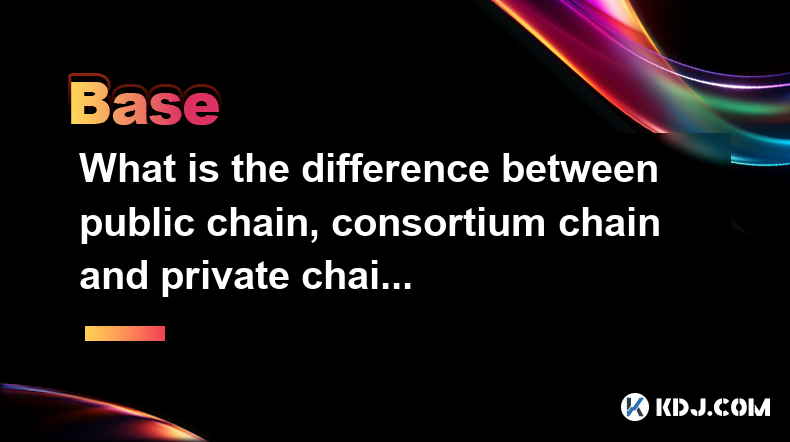
What is the difference between public chain, consortium chain and private chain? What scenarios are suitable for each?
Apr 04,2025 at 09:21pm
In the world of blockchain technology, understanding the differences between public chains, consortium chains, and private chains is crucial for selecting the right type of blockchain for specific applications. Each type of blockchain has its own unique characteristics and use cases, which we will explore in detail. Understanding Public ChainsPublic cha...
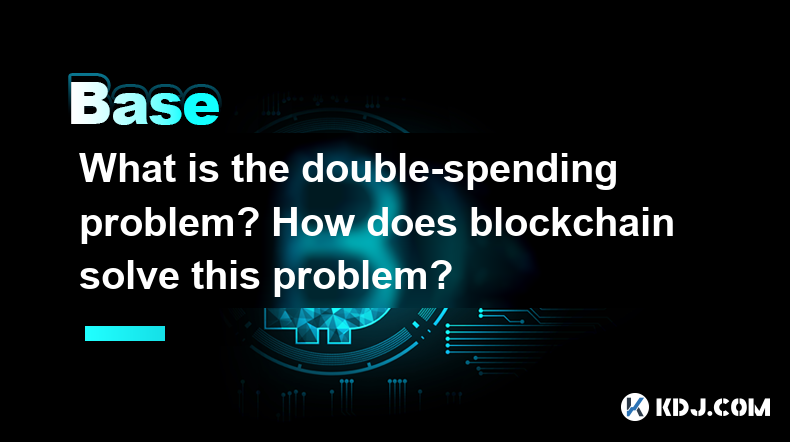
What is the double-spending problem? How does blockchain solve this problem?
Apr 04,2025 at 09:07am
The double-spending problem is a significant challenge in the realm of digital currencies. Double-spending refers to the potential for a digital currency to be spent more than once. This issue arises because digital files, unlike physical cash, can be easily duplicated. If not addressed, double-spending could undermine the integrity and trust in any dig...
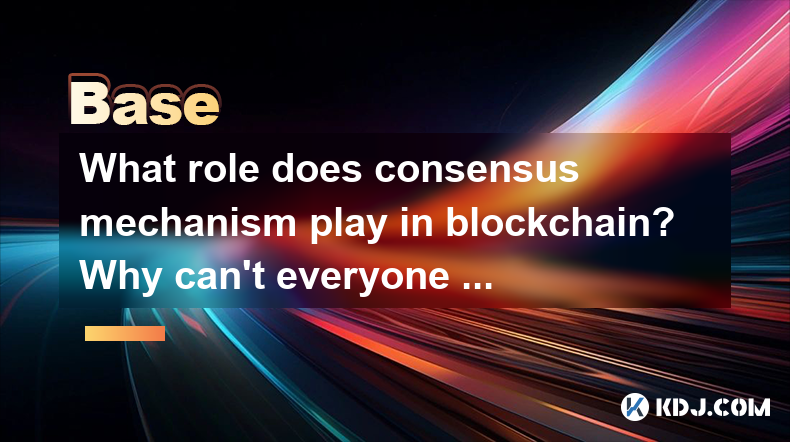
What role does consensus mechanism play in blockchain? Why can't everyone keep accounts?
Apr 05,2025 at 12:29am
The consensus mechanism is a fundamental component of blockchain technology, serving as the backbone for maintaining the integrity and security of the network. It ensures that all participants in the network agree on the state of the ledger, which is crucial for the decentralized nature of blockchain. Without a consensus mechanism, the decentralized sys...
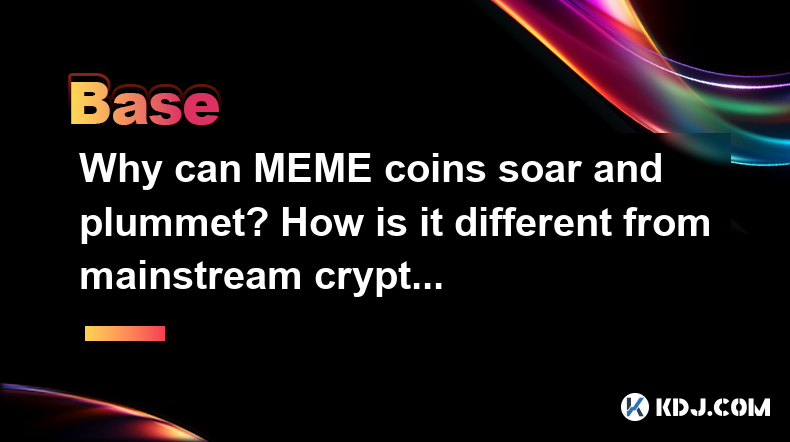
Why can MEME coins soar and plummet? How is it different from mainstream cryptocurrencies?
Apr 04,2025 at 03:07pm
The world of cryptocurrencies is vast and diverse, with a wide range of digital assets that cater to different needs and interests. Among these, MEME coins have carved out a unique niche, often experiencing dramatic price fluctuations that can both soar and plummet in a short period. This phenomenon, while intriguing, differs significantly from the beha...

Why is the oracle called the bridge between blockchain and the real world?
Apr 04,2025 at 04:00am
The concept of an oracle in the cryptocurrency and blockchain world is crucial for understanding how these decentralized systems interact with external data. The oracle is often referred to as the bridge between blockchain and the real world because it serves as a vital intermediary that fetches, verifies, and transmits off-chain data to the on-chain en...

What role does the Merkle tree play in the blockchain? Why can it verify data integrity?
Apr 04,2025 at 01:29pm
The Merkle tree plays a crucial role in the blockchain, primarily due to its ability to efficiently and securely verify data integrity. This article will delve into the structure of a Merkle tree, its implementation in blockchain, and how it ensures the integrity of data. Understanding the Structure of a Merkle TreeA Merkle tree, also known as a hash tr...

What is the difference between public chain, consortium chain and private chain? What scenarios are suitable for each?
Apr 04,2025 at 09:21pm
In the world of blockchain technology, understanding the differences between public chains, consortium chains, and private chains is crucial for selecting the right type of blockchain for specific applications. Each type of blockchain has its own unique characteristics and use cases, which we will explore in detail. Understanding Public ChainsPublic cha...

What is the double-spending problem? How does blockchain solve this problem?
Apr 04,2025 at 09:07am
The double-spending problem is a significant challenge in the realm of digital currencies. Double-spending refers to the potential for a digital currency to be spent more than once. This issue arises because digital files, unlike physical cash, can be easily duplicated. If not addressed, double-spending could undermine the integrity and trust in any dig...

What role does consensus mechanism play in blockchain? Why can't everyone keep accounts?
Apr 05,2025 at 12:29am
The consensus mechanism is a fundamental component of blockchain technology, serving as the backbone for maintaining the integrity and security of the network. It ensures that all participants in the network agree on the state of the ledger, which is crucial for the decentralized nature of blockchain. Without a consensus mechanism, the decentralized sys...

Why can MEME coins soar and plummet? How is it different from mainstream cryptocurrencies?
Apr 04,2025 at 03:07pm
The world of cryptocurrencies is vast and diverse, with a wide range of digital assets that cater to different needs and interests. Among these, MEME coins have carved out a unique niche, often experiencing dramatic price fluctuations that can both soar and plummet in a short period. This phenomenon, while intriguing, differs significantly from the beha...
See all articles





















































































